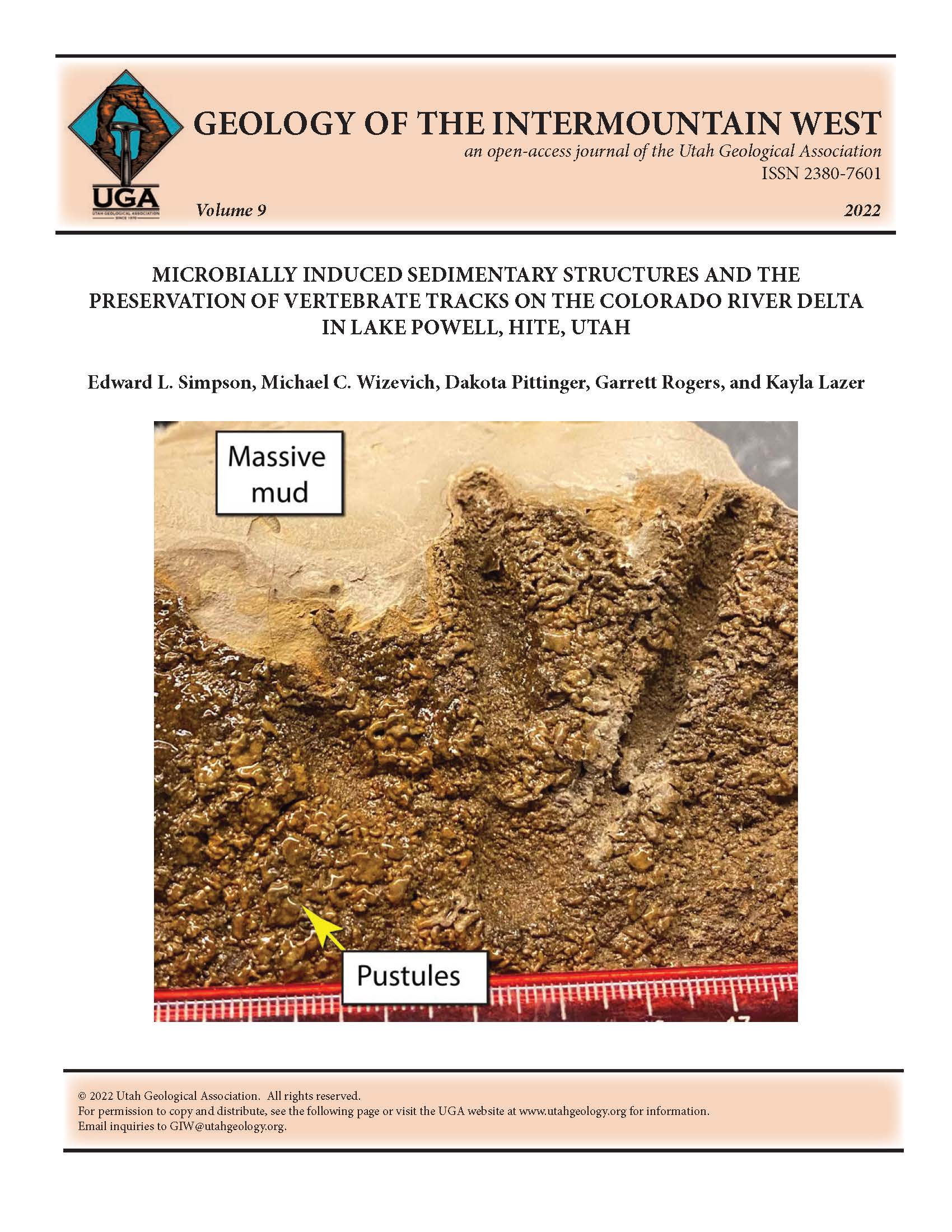Microbially induced sedimentary structures and the preservation of vertebrate tracks on the Colorado River delta in Lake Powell, Hite, Utah
Abstract
Microbially induced sedimentary structures (MISS) increase the preservation potential of vertebrate and invertebrate ichnofossils. The Colorado River forms a delta in Lake Powell at Hite, Utah, and the deltaic shoreline provides a natural laboratory to examine the development of MISS and their influence on vertebrate track preservation. Two types of MISS were identified: pustular and blister. Pustular MISS occur in proximity to the June 2020 high water line. The pustular morphology is characterized by mm-scale small mounds, or pimple-like shapes. Field emission scanning electron microscopy (FESEM) examination identified preserved filamentous cyanobacteria intertwined with fine silt- and clay-sized sediment and well-preserved freshwater diatoms. Branta canadensis (Canada goose) tracks are well developed and they vary from single tridactyl tracks to trampled horizons. Blister MISS, in contrast to pustular MISS, are present in lower elevations, forming in deeper water, greater than 0.5 m. Blisters are mm- to cm-scale irregular mounds that consist of arching mats that are detached from the underlying sediment creating a pore space. Through time the blister mat mounds are destroyed by fragmentation due to desiccation combined with wind processes. FESEM and energy-dispersive spectroscopy system (EDS) analyses indicate the presence of filamentous cyanobacteria on the exterior and palisade Bacillus-type bacteria are in the interior of the blister arch, and gypsum crystals within the mat arch. Freshwater diatoms are present in both mat types. A single human track and multiple trackways of Canis latrans (coyote) were identified on the blister mats. Weakly impressed Canada goose tracks are present. Tracks cross cutting or modifying the pustular MISS have preserved MISS surface textures except in the heavily trampled areas, whereas tracks linked to the blister mat typically do not have reserved mat texture, and usually contain fragmented mat within the impression. Because of fluctuating lake levels and desiccation, these track types had a limited temporal window where they may be produced when moisture conditions permitted MISS development, about two months. Any vertebrates through the area out of the “track window” were not recorded in sediment and mat modification. Tracks imprinted on pustular MISS in lacustrine environments will have a high preservation potential if there are annual fluctuations in lake levels.





